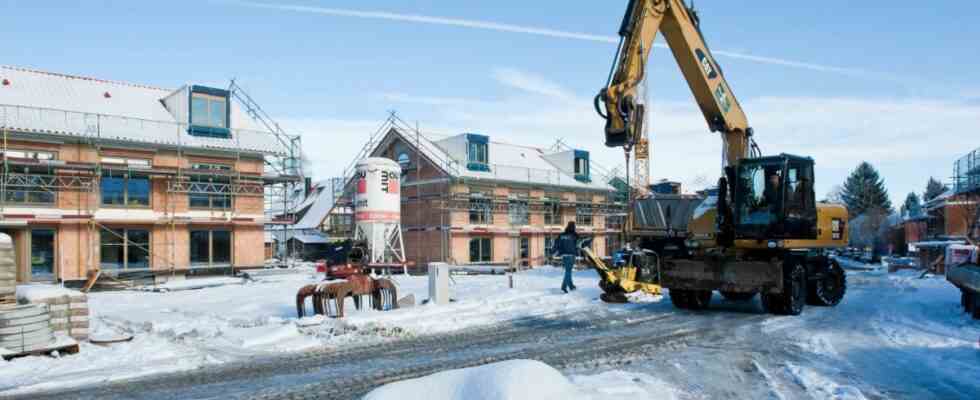There are cases in which the same example has to be used over and over again. Such a case is the Grafinger building price development for the cheapest house in the local building land, as it was then called, the “Wolfschlucht”. It had cost 700,000 euros ten years ago. A horrendous sum even then for price-restricted building land. At that time, the standard land value was a good 600 euros per square meter. In the meantime, it has passed the 1500 euro mark in quite a few corners of Grafing. The rest is math. The result is that even many high earners in Grafing can no longer afford building land.
In order to shift the figures at least a bit, a “city council traffic light” made up of the Greens, SPD and FDP joined forces in February – to enable at least a few more people from Grafing to get a little cheaper building land. If they have their way, the local building land development needs an overhaul. Namely in the form of a new so-called basic resolution on social housing policy. It regulates the conditions under which cheap meadows can become expensive building land.
The owners also benefit when fields and meadows become building land
The applicants had aimed for a 50/50 split of the gross building land. “The core idea is that the community and property owners share the newly created, valuable building land, which is only created by combining land and building rights.” If the city receives a larger share of the building land, it can also allocate more houses or apartments according to the catalog of criteria. In return, she upgrades cheap meadows to expensive building land.
According to the basic resolution from 2015, the following applies in Grafing: deducting development areas, property owners are allowed to bring 65 percent onto the open market. They have to sell the remaining 35 percent at 40 percent below the current land value. The city’s catalog of criteria regulates who is awarded the contract for this part. There are minus points for high income, plus points for children or relatives to be cared for. The technical term is socially just use of land, or SoBon for short.
In the meanwhile somewhat revised February application, for the sake of simplicity, there were no longer 50 percent of the gross building land. Instead of the previous 35 percent, now 40 percent of the net building land. The development areas, which the owner has to make available free of charge anyway, have already been deducted there. The difference to the required 50 percent social quota of the gross building land is usually only insignificant according to the head of the building department, Josef Niedermaier.
The regulation does not apply to smaller construction projects with up to two houses
When the matter came up for debate at the most recent city council meeting, there was headwind at first. “The decision is wrong, the construction industry has no advantage from it,” criticized CSU parliamentary group leader Max Graf von Rechberg. That would only drive prices up further. CSU local chairman Florian Wieser also warned of this. One should not overstrain the pain threshold of the property owner. Finally, parliamentary colleague Josef Fritz also announced a dissenting vote for the vote. “The de minimis limit bothers me enormously.”
It determines the extent of construction projects that come under the basic resolution. Up to two residential buildings are still “vacant”. A property owner can, for example, build two houses for his children without having to sell them to the city at a discount of 40 percent. However, Fritz was annoyed by the new floor space limit of 500 square meters. This, in turn, is expressly desired by the Greens, SPD and FDP. “That will make it easier in the future to build more multi-storey apartments on cheaper building land,” explained Christian Kerschner-Gehrling (SPD). In fact, the focus in recent years has been primarily on single and two-family houses and terraced houses.
In any case, the criticism from the CSU did not go unchallenged. “You can’t just leave water, food and a roof over your head to the free market economy,” said Green City Councilor Roswitha Singer. Group colleague Ottilie Eberl reminded: Property owners are still allowed to sell 60 percent of the net building land at the highest price on the market. “I don’t see that that would be any pain now.”
The dissenting votes from the CSU parliamentary group – with the exception of their city councilors Elli Huber and Susanne Linhart – were unable to prevent the new fundamental decision. It now applies to all future planning applications.

